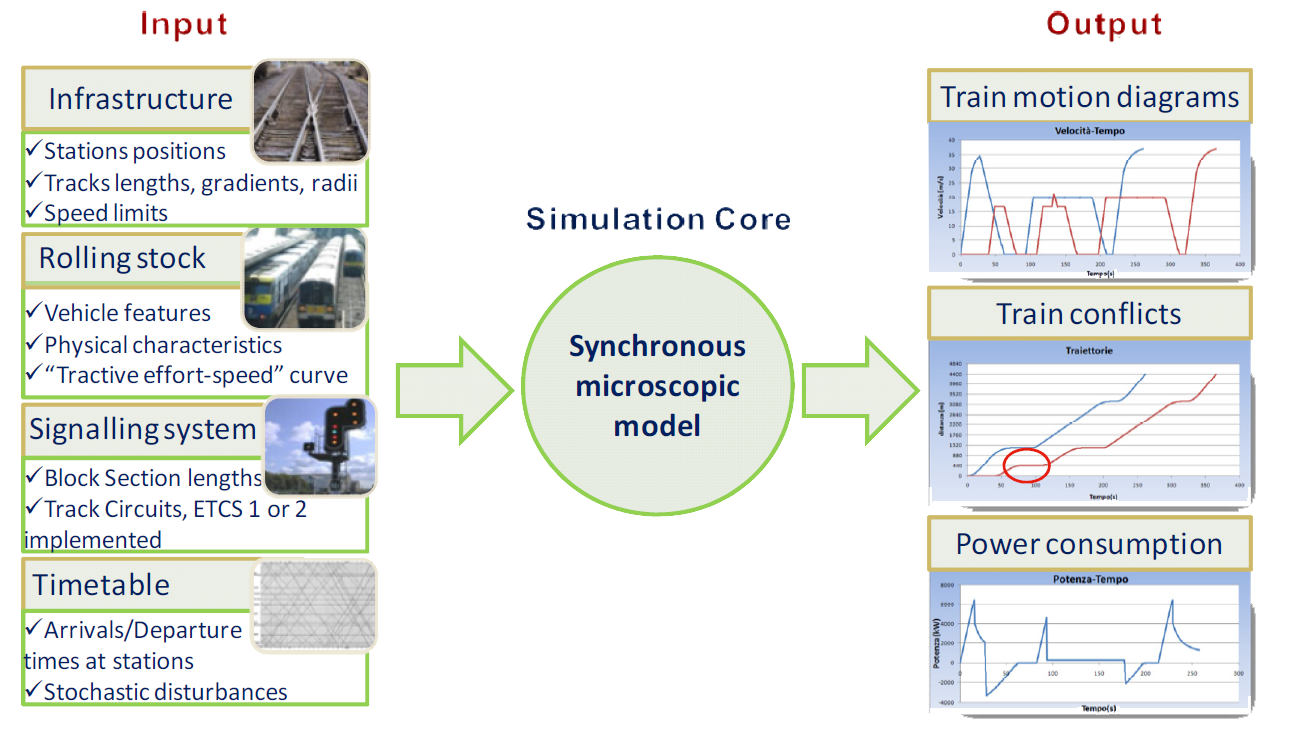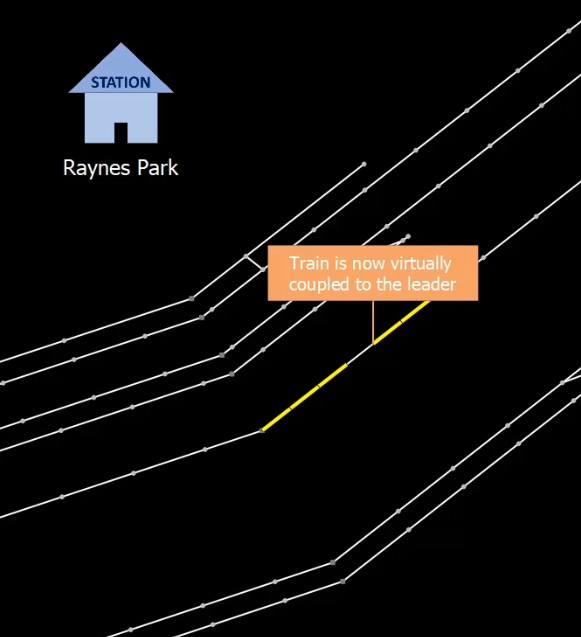EGTRAIN
EGTRAIN is a flexible microscopic simulation environment of railway traffic that can be easily and effectively be interfaced with mathematical tool-boxes for sensitivity analysis, timetable planning, real-time traffic rescheduling algorithms and black-box optimization.
EGTRAIN is an object-oriented model developed in C++ programming language representing in detail the attributes of each element of the railway network. It consents to accurately describe the dynamic evolution of train state variables (e.g. speed and position) considering both stationary and transient phases.
The name of this model is EGTRAIN (Environment for the desiGn and simulaTion of RAIlway Networks) and it is a time-driven (synchronous) multi-train simulation model which administers input data in the following four different interacting modules:
• Infrastructure module. Input data required by this module concern with track attributes such as speed limits, gradients, radii, as well as coordinates of infrastructure elements (e.g. positions of signals and stations). Railway network is here modelled in a link-oriented graph; therefore links contain all the information about track attributes, while details about spatial coordinates of signals and stations are assigned to nodes.
• Rolling stock module. Rail vehicles have been represented in a detailed object-oriented model considering both their physical and mechanical characteristics. “Tractive effort-speed” curve of the traction unit, maximum deceleration rate, jerk value, as well as train composition (number of wagons, masses of the coaches and the traction unit, etc.) are all input data of this module. Moreover this module also includes a further sub-module for the calculation of the mechanical energy consumption.
• Signalling system module. The signalling system assures the respect of safety requirements by train operations, regulating the movement of trains on the track. In this module, interactions between vehicles and signalling equipments are modelled, for different types of signalling systems. Modelled signalling systems include the Italian BACC system, the British TPWS, the Dutch ATB NS54 and the European ETCS level 1, ETCS level 2 and ETCS level 3 moving-block. Also, the concept of Virtual Coupling is implemented.
• Timetable module. Departure/arrival times and /or minimum dwell times at stations, are all input data required by this module. Moreover it is possible to introduce disturbances to ordinary train operations, by imposing a deterministic or a stochastic disturbances to a specific train at a certain station. Dwell times at stations can also be modelled as stochastic variables by simply specifying the corresponding probability density function (pdf), as well as the mean and the standard deviation of the pdf itself.

Architecture and modules of the “own-built” simulation model EGTRAIN
Train movements along the track are obtained by performing an integration over time of the Newton’s motion formula: for each time step, the maximum force between the traction unit’s wheels and the tracks is calculated to determine the acceleration function which is then integrated a first time to provide the speed function and a second time to provide train’s position. Train energy consumption and mechanical power at a certain instant t is computed as the product between the surplus force (i.e. the difference between the tractive effort and the motion resistances) at the wheel’s rim and the speed. Then the mechanical energy is obtained by integrating the instantaneous mechanical power over time. The computation of the mechanical energy can also take into account regenerative energy from braking when trains are equipped with this kind of system.
Output data provided by EGTRAIN are:
• train diagrams (e.g. distance-time trajectories, speed-distance diagrams, etc.);
• train conflicts (e.g. conflicts due to block section occupation time overlaps);
• train delays at a given location, calculated as the difference between the actual and the scheduled arrival of a train at that location;
• energy consumption diagrams (e.g. mechanical power-time diagrams, mechanical energy-distance diagrams).
A successful validation process of the model has been performed against realised train data coming from different railway operators and infrastructure managers in Europe.
EGTRAIN features a parallel architecture that consents to run the N different perturbed scenarios in a concurrent way, in order to strongly decrease computation times when using multi-core computers.
People involved
Publications
- Corman, F., & Quaglietta, E. (2015). Closing the loop in real-time railway control: Framework design and impacts on operations. Transportation Research Part C: Emerging Technologies, 54, 15-39.
- Quaglietta, E., Corman, F., & Goverde, R.M.P. (2013, October). Impact of a stochastic and dynamic setting on the stability of railway dispatching solutions. In 16th International IEEE Conference on Intelligent Transportation Systems (ITSC 2013)(pp. 1035-1040). IEEE.
- Quaglietta, E., Corman, F., & Goverde, R.M.P. (2013). Stability analysis of railway dispatching plans in a stochastic and dynamic environment. Journal of Rail Transport Planning & Management, 3(4), 137-149.
- Quaglietta, E., & Punzo, V. (2013). Supporting the design of railway systems by means of a Sobol variance-based sensitivity analysis. Transportation Research Part C: Emerging Technologies, 34, 38-54.
- Quaglietta, E., Corman, F., & Goverde, R.M.P. (2013). Stability of railway dispatching solutions under a stochastic and dynamic environment. In RailCopenhagen2013: 5th International Seminar on Railway Operations Modelling and Analysis (IAROR). Institute for Transport Planning and Systems, ETH Zurich.
- Bešinović, N., Quaglietta, E., & Goverde, R.M.P. (2013). A simulation-based optimization approach for the calibration of dynamic train speed profiles. Journal of Rail Transport Planning & Management, 3(4), 126-136.




